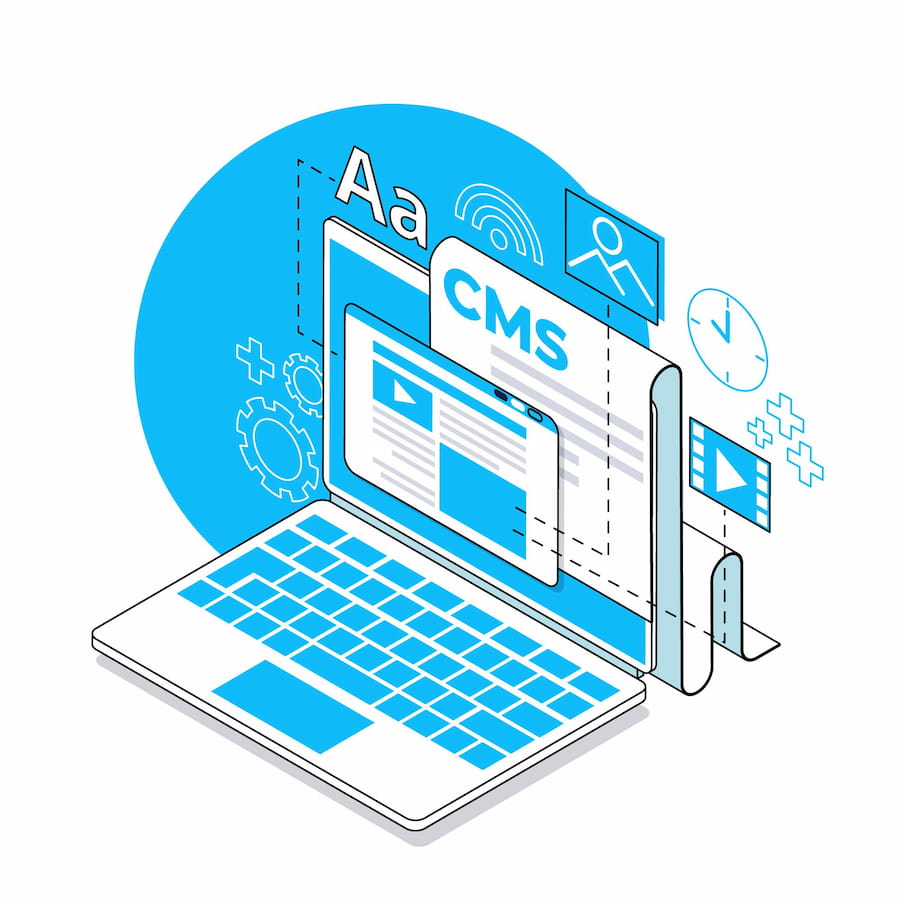What is WordPress?
WordPress is an open source CMS. CMS stands for content management system, and among the many types of CMS, WordPress is a tool that lets you create content and organize websites to publish it. Content and websites created with WordPress are so scalable and autonomous that more than 40% of the world’s websites are now built with WordPress.
It’s a CMS that can be monetized on a global scale, and it continues to perform well with regular updates. For all these reasons and more, WordPress is growing in popularity. Let’s take a look at how to use WordPress, how to set up monetization, and its advantages and disadvantages.

You don’t need to know how to code or have an eye for design to build a website with WordPress, because professional developers and designers share their own plugins and design themes with WordPress. Because WordPress is an open-source CMS, you can pick and choose the plugins and themes you want to use.
How to Use WordPress
Using WordPress can seem difficult for beginners. There are many things that need to be set up during initial use. However, once you learn how to use WordPress and become more proficient, you often stop using other website builders or CMS as you become accustomed to WordPress’s unique scalability and autonomy.
Before you can really get into the swing of things, you need to sign up for WordPress. There are two types of WordPress subscriptions. There are two types of WordPress subscriptions: WordPress installations, where you install the WordPress software on your computer, and WordPress subscriptions, where you sign up for the WordPress platform directly. Most people use a WordPress subscription because WordPress installation requires a hosting server in addition to the WordPress software.
Now that you’ve signed up for WordPress, it’s time to familiarize yourself with how to use it. The most obvious way to do this is to use WordPress yourself, experiencing and learning each and every feature. However, this can take a long time. Today, we’re going to summarize the most essential parts of using WordPress.

A. Creating a WordPress Website
Creating a WordPress website is the first function you use when using WordPress. As WordPress continues to evolve and focus on user-friendliness, the ability to create a website is becoming less and less difficult.
However, there are still a lot of initial settings, so the barrier to entry is high for beginners. Some say that a CMS is only user-friendly if you become familiar with its various functions.
But if you know the nitty-gritty, you can easily adapt. There are three keys to creating a WordPress website.
1. Install WordPress Essential Plugins
There are certain plugins that are essential for building a WordPress website. These are Yoast SEO and Rank Math. Plugins are extensions that help you run WordPress professionally. Yoast SEO is essential for getting your WordPress website to appear on Google, and Rank Math is a must-have plugin that lets you check the competitiveness of your content in real time. There are many other plugins that can help you speed up your WordPress website, protect your website from hacking, and provide visitor statistics.
Paid plugins often have much better functionality than free plugins, and finding them and exploring their features requires specialized WordPress knowledge, so it takes a little getting used to for WordPress newbies. But the process itself is simple enough that it’s comparable to picking out an app in the app store. Use plugins appropriately to give your WordPress a competitive edge.
2. Purchase and Apply WordPress Theme
A WordPress theme is the layout of WordPress. Think of it as the overall design of your website that you create with WordPress. Even content that looks rather plain can be transformed into something that captures the attention of your visitors by applying a stylish theme. If you search for WordPress themes, a lot of material already exists, so you can complete your WordPress website just by selecting the one you want.
It’s important to note that applying a theme may delete plugins you’ve already installed, or the plugins and theme may not work together, breaking functionality and layout. One way to avoid this is to customize your WordPress theme. This requires development and design expertise, so it’s much more efficient to hire a professional to do it for you.
3. Launch Your WordPress Website on Search Engines
Once you’ve finished applying all plugins and themes, it’s time to launch WordPress on search engines. The biggest thing to watch out for at this point is that you keep postponing your planned launch to make sure everything is fully functional. Even after you’ve launched to the search engines, you’ll still need to do a lot of SEO and schema work to get to the top. It makes a lot more sense to gather visitors first, analyze their data, and then tweak your website.
B. Sign Up for WordPress Membership
You need to have a WordPress signup feature so that your WordPress visitors can sign up for membership. In addition to signing up, other essential features like logging in and out are also highly searched for. Membership registration is the most frequently occurring event on a WordPress website, so you must use a high-quality plugin.
There are two criteria for choosing a good WordPress signup plugin. Keep these two criteria in mind when choosing a WordPress signup plugin.
- Periodic plugin updates
- Is it compatible with the version of WordPress you are using?

Afterwards, design the signup page and decide what information to ask for when signing up, and so on. You’ll also need to add logout settings and other details. The beauty of WordPress is that all of this is 100% customizable. But for this, you will need to study and research WordPress to some extent.
Are you still having trouble using WordPress?
Do not worry. Zeta Productions provides WordPress-specific services for you. Click the keywords below to explore our services and receive free consultation.
If you want to create a website: Create a WordPress Website
The best-selling eCommerce: WordPress eCommerce Development
Now even blogs are on Google: WordPress Blog Development
100% custom design services: WordPress Theme Development
Plugin with only the latest features: WordPress Plugin Development
Make WordPress operation more convenient: WordPress Support and Maintenance
How to Set Up WordPress Revenue
There are many different ways to monetize WordPress. You can create a WordPress store to sell products, create a WordPress blog and publish content to earn advertising revenue for the platform, or create a membership website to collect recurring monthly payments.
One of the lowest barriers to entry for monetizing WordPress is connecting AdSense ads to WordPress. If you’ve ever blogged, you’ll be very familiar with publishing content with WordPress and connecting AdSense ads to it. Let’s take a closer look at AdSense in WordPress.

WordPress AdSense
You can earn advertising revenue by connecting Google AdSense to WordPress. To do this, you must first obtain advertisement approval. Many beginners give up at this stage. This is because the standards and timing for granting advertisement approval for AdSense connection are all different. In other words, no one knows the exact criteria for AdSense ad approval.
Only a few basic methods are being shared. Things like making sure you do content SEO, keeping your WordPress website from lagging, getting it crawled by Google, and more. However, what is most important is the quality of the content you publish. No matter how much content you publish, if it is low-quality gossip or a one-off issue, it will be judged as a low-quality site and will never be approved for advertising.
Once you’ve published quality content, worked to maintain SEO and site functionality, and gotten your ads approved, it’s time to connect AdSense to your site. Here’s how to connect AdSense to WordPress:
- Log in to your AdSense account and copy the personally assigned ad unit code.
- Go to WordPress widgets
- Select Custom HTML
- Enter and update the ad unit code
Once you have your ads approved, connecting AdSense is not difficult at all. However, if you are not familiar with WordPress, it may take a little time to find the functions to connect your ads. If you follow the steps above carefully, you should be able to connect AdSense to WordPress in no time.
Be careful not to leak or lose your AdSense ad unit code. If you lose it, you can retrieve it from your AdSense account, but if the code is leaked and someone uses it, you can’t get it back and you won’t get any ad revenue. Pay special attention to ad code security.
WordPress Pros and Cons
WordPress Advantages
- Freely available themes and plugins
- Site optimization for any platform
- Open source with great free features
WordPress Disadvantages
- Difficult to apply to domestic search engines
- Difficult to utilize 100% if you are not an expert
Conclusion
So far, we’ve covered the essentials of creating a WordPress website, its advantages and disadvantages, and how to set up WordPress monetization. The fastest way to learn is through hands-on experience.
Want to increase efficiency in your WordPress work?
Contact us by clicking the button on the right. We offer friendly, free consultations.
Now that you’ve covered the basics of what you need to consider when using WordPress, here’s some more information that will help you when you’re ready to start your own web business with WordPress.
- Create an online storefront to sell your stuff to the world : Learn more about detail pages
- From basic definitions to production strategies: What is a website?
- Most Popular Website Builder: Website Builder
- Create content and optimize it for search engines: SEO
FAQs
What is WordPress?
WordPress is a CMS that allows you to manage and publish content. The number of users is gradually increasing because you can create various types of websites such as eCommerce sites, blogs, and landing pages. Thanks to its ability to create websites without coding knowledge, not only professionals and businesses but also ordinary people are using WordPress to create various sites.
What is the difference between WordPress and a website builder?
The difference between WordPress and website builders is whether they have server hosting or not.
Website builders either do not have their own hosting servers or provide only a very limited number of servers, making them less scalable. However, WordPress is highly scalable because it can be freely applied to any server the user wants.What are WordPress plugins?
WordPress plugins are content management functions provided by WordPress’s own community.
Various functions can be used through plugins, such as generating visitor information statistics, measuring content completeness, and taking responsibility for security. There are free and paid plugins, and for paid plugins, the price depends on several factors, including features and versions. Therefore, there are plugins that can be used by not only corporate customers but also ordinary individual customers.How can I make money with WordPress?
There are endless ways to make money with WordPress. You can create an eCommerce site and sell products, or you can make money by linking advertisements to your blog. It is also possible to increase visitor conversion rates by properly using landing page creation methods. The most essential step is to use WordPress and become familiar with its features.
